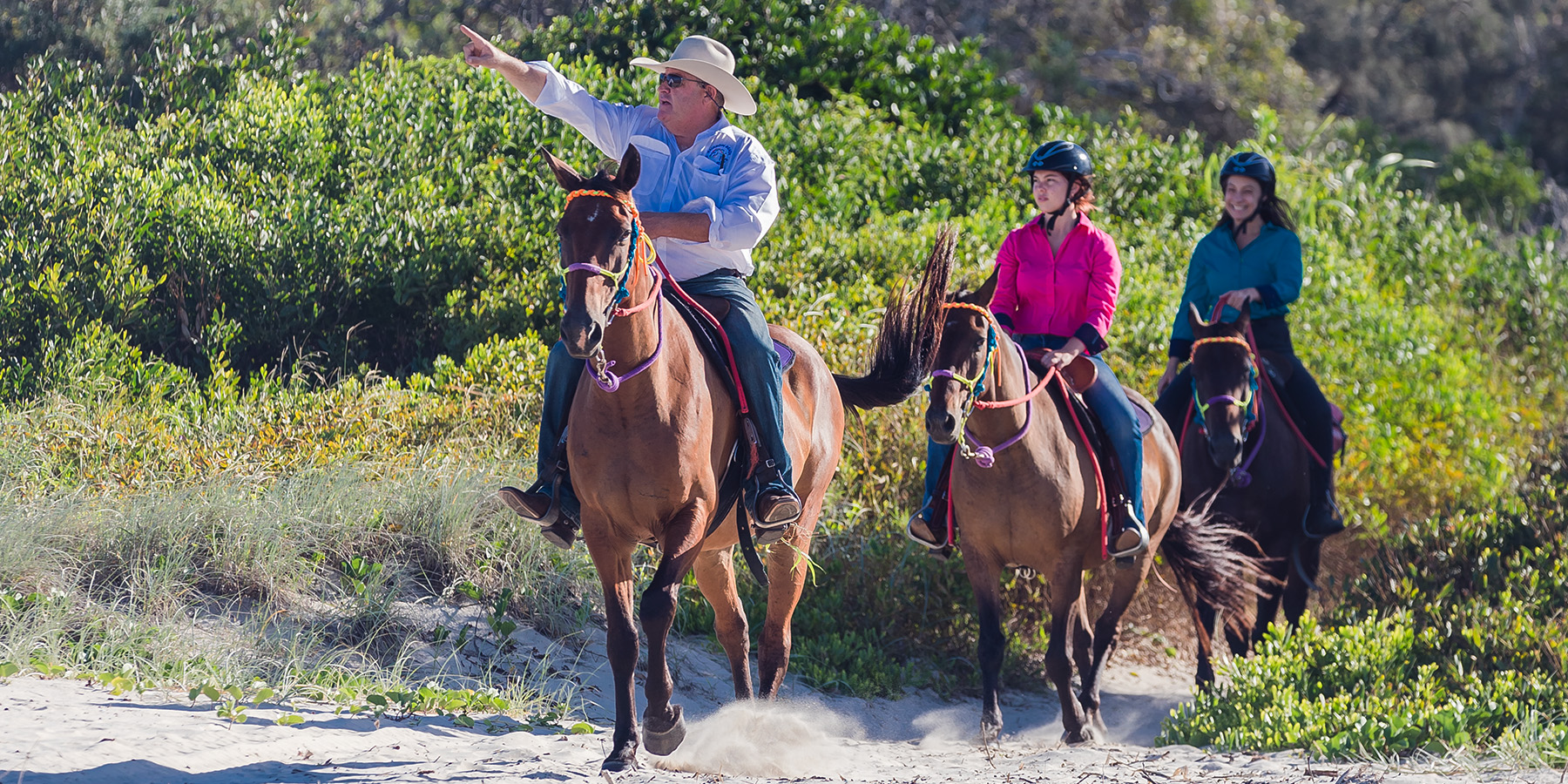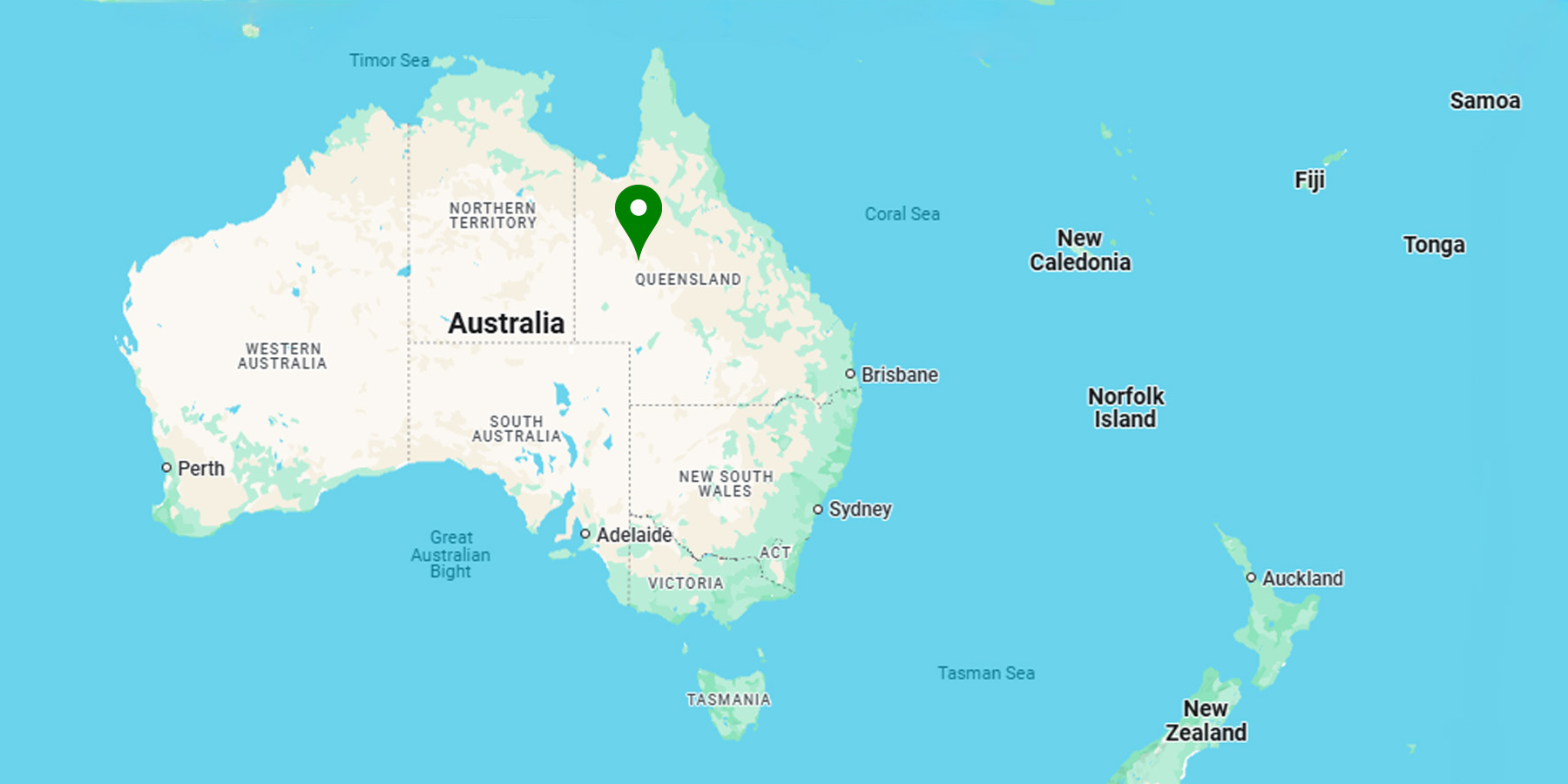
Tourism and Events Queensland
Horse Riding
Horse riding and trekking are popular in Queensland and include club rides, local treks, and extended riding/camping expeditions.
A horse is the projection of peoples’ dreams about themselves – strong, powerful, beautiful – and it has the capability of giving us escape from our mundane existence.
Pam Brown
Information
Horseriding can be enjoyed across hundreds of kilometres of trails in Queensland’s parks and forests, ranging from gentle, well-graded trails to rough and challenging terrain.
SEQ Horse Riding Trail Network
Enjoy South East Queensland from your horse! Between Noosa and the Gold Coast, a multitude of horse trails make up the South East Queensland horse riding trail network. Covering a total of 547km, there is a range of environments to explore.
Source: Queensland Government
Horse Trail Riding Good Practice Guide
The Australian Adventure Activity Standard (AAAS) and associated Good Practice Guides are minimum, voluntary guidelines for conducting outdoor recreation activities . Designed primarily for organisations conducting outdoor recreation activities where the participants are dependent on the activity provider, they are also a useful reference for all outdoor enthusiasts.
Horse Safety Australia’s standards cover most areas within the horse industry. They were initially intended only for use by those involved in group riding situations, but now include those working with single riders as well. They are relevant to evaluating and improving existing riding programs, as well as establishing new programs. A site accreditation process is available, in addition to the personal accreditation that occurs during our instructor and trail riding, or other specialized “clinics”.
Within Horse Safety Australia, no style of riding is favoured, all acceptable as long as the method is safe, is good horsemanship, and produces good results.
Horse Safety Australia Standards incorporate and in some cases exceed the requirements in the 2009 (revised) Australian Horse Industry Council Code of Practice (HorseSafe) for the horse industry and the Safe Work Australia Guide for managing risks when new and inexperienced persons interact with horses. They are designed to promote safe practices, and to aid in improving the effectiveness of any riding program. However, while compliance with these standards will assist in developing a good program, they cannot guarantee the safety or efficiency of any program.
Horse riding strategic framework
Horse riding is allowed within a national park when the activity is permitted by a regulatory notice under the Nature Conservation Act 1992.
A horse riding strategic framework has been developed to guide the selection and subsequent management of horse riding trails through national parks, although it can also be applied to other Queensland Parks and Wildlife Service (QPWS) managed areas. The framework provides a consistent approach to identifying trails and infrastructure requirements as well as providing management objectives and strategies for dealing with issues such as environmental protection, visitor conflict on multi-use trails and minimising risks.
ATHRA’s 13 Golden Rules
The Australian Trail Horse Riders Association has developed a set of 13 Golden Rules for the environmentally aware horse rider.
- Always be observant and avoid unduly disturbing unstable and erosion-prone soils.
- Avoid allowing horses to denude areas of vegetation, especially during stays of more than one night in one location. Be ready to relocate picket lines and portable yards whenever necessary.
- Rather than risk damage to fragile creeks, streams and riverbanks, select firm, stony crossings and use bridges wherever possible as this will help ensure good water quality and limit erosion.
- Carry and use canvas or collapsible buckets and/or a pump hose, where possible, to water and wash horses, well away from watercourses, thereby further reducing the potential for water pollution and bank erosion.
- Only allow your horses to eat weed-free feed at least 24 hours prior to entering bushland areas. Weed-free feed includes clean chaff, pellets and cracked, rolled or steamed grains. Never take meadow hay into bushland areas as it often contains huge quantities of weed seed.
- Undertake some basic weed identification education to help with Point 5, and possibly even assist land managers in quickly identifying and eliminating new outbreaks of problem species.
- Dispose of or disperse manure from overnight campsites as this will help to limit flies breeding.
- Protect trees from ringbarking by picket/night-line ropes and tree protector straps. Incorporate stops in the line to prevent horses from chewing the bark of trees.
- Where possible make picket/night-line length 15 metres or more to reduce concentrated impact.
- Avoid yarding horses not already familiar as paddock mates. This will avoid unnecessary impact should they choose to chase each other around establishing a new social structure or ‘pecking order’.
- Always camp horse well clear of watercourses, at least 30 metres.
- Remove all rubbish from campsites, don’t just bury it and forget it. Where possible, remove litter left by others.
- Always be friendly and civil to other bushland users. You should always take the initiative in avoiding any potentially dangerous situations involving your horses and other bushland users.
Related Articles
All smiles after first 40km ride

A tiny five-year-old from Queensland who stands just over a metre tall has braved darkness, the cold and rain to complete her first 40-kilometre horse ride in less than five hours.
Taylor Grogan, a fourth-generation endurance rider from the Sunshine Coast’s renowned Sample family, rode into the diverse terrain of the Mary Valley’s Imbil State Forest in the early hours of Sunday morning.
Horses are the only means of transport into the wilderness that has a mind of its own … there will never be more horses on the trails than the other user groups. The economics of owning horses and the sacrifices involved will keep their numbers modest. But the horse-human partnership is a unique and beautiful way to access nature. It has firm roots in our past and deserves a place in our present and future.
Source
American Trails
Search for horse riding providers in Discover
(search on ‘horse riding’ in Select Activity)
Recommend a Resource
Have an interesting or useful resource or link to share?
Let us know by Recommending a Resource



